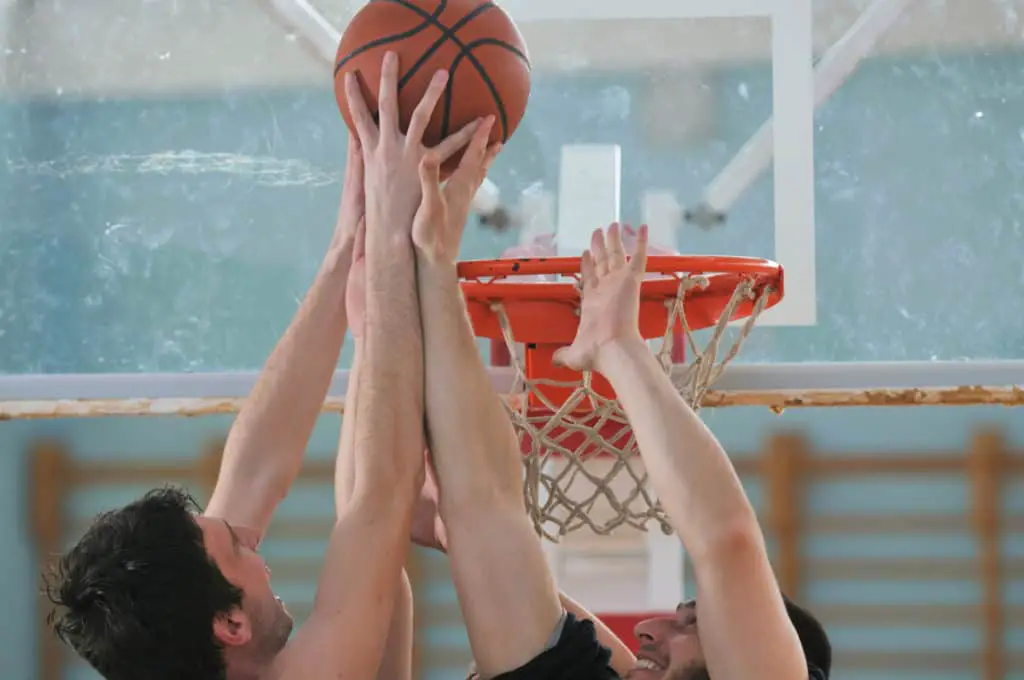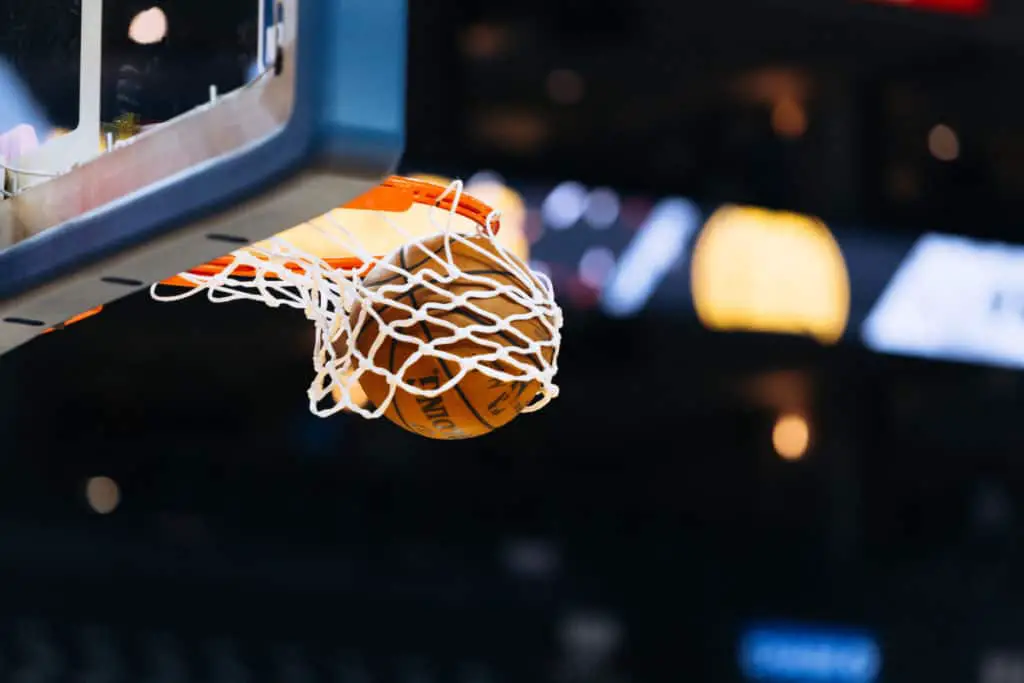Basketball is a game typically played on a 94’ by 50’ at the NBA and NCAA Levels, 84’ by 50’ at the high school level and sometimes smaller than that at the middle school or youth levels.
However, some distances such as the free throw line are consistent from level to level.
How Far From the Hoop Is the Free Throw Line?
The free throw line on just about every basketball court is 15’. This distance is standard regardless of the length of the floor. While the three point line varies from level to level, the free throw line remains consistently at 15’
Are all basketball courts the same size?
Why is the free throw line always the same distance?
Regardless of the size of the court, the key area (the paint), which includes the free throw line at the top for the key, are consistent in size to provide some regularity in the game. While the length and the width will vary, the key and the free throw line are the same size.
At the NBA level, the key is wider than every other level of basketball and this is due to the size of the NBA players who range from 6 foot tall to well above 7 foot tall in some situations, with most players ranging in the mid 6 foot range.
These bigger bodies require a larger paint area on free throws and on offensive and defensive 3 second calls.

Adjustment of the free throw line in youth basketball
In some situations, tournament or league directors will move the free throw line closer to the hoop to allow the younger and smaller participants to be able to hit the rim on a free throw. One other possible adjustment is to shoot from 15’, but allow the shooter to go over the line prior to the ball hitting the hoop.
Can a player cross the free throw line on a free throw?
No, in the regulation rules of baseball, the player cannot cross the line until the ball has hit the hoop. This prevents players from taking several steps and possibly giving them an advantage if the shot is short and is going to hit the front of the rim.
The players must start within the half circle that is drawn on the court and cannot cross the free throw line.
At some levels of youth basketball, this rule is ignored or adjusted to allow the player, who typically has to jump to even get the ball to the hoop, to cross the line in the act of shooting.
When does a player get to shoot from the foul line?
There are two different scenarios when a player gets to shoot a free throw. The first is when the player is fouled in the act of shooting. At all levels of basketball the player now gets two free throws, unless they are fouled beyond the three point line, then they would shoot 3 free throws. The second is when a player is fouled when the fouling team has exceeded the foul limit in the quarter or the half.
At the NBA level, on the 5th foul in a quarter, the opposing team now shoots 2 free throws on every defensive foul.
This number resets every quarter.
At the College and HIgh School Level, on the 7th foul of the half, the opposing team now shoots a 1 and 1 on every defensive foul. On the 10th foul, the team fouled enters the double bonus and now shoots 2 free throw on every defensive foul.
This number resets at the beginning of the 2nd half.
Why Basketball is the Best Sport: Top 11 Reasons!
What is a 1 and 1 in basketball?
A 1 and 1 foul shooting situation allows the team fouled to shoot the first free throw, if the shot is made, the team gets the 2nd foul shot. If the 1st one is missed, the ball is now in play once it hits the hoop.
This 1 and 1 situation is used at the youth, high school and college level on the 7th foul of the half.

Who are the top free throw shooters of all time?
The top 10 best free throw shooters of all time consist of the following:
- Steph Curry – 90.80%
- Steve Nash – 90.43%
- Mark Price – 90.39%
- Rick Barry – 89.98%
- Peta Stojakovic – 89.48%
- Chauncey Billups – 89.40%
- Ray Allen – 89.39%
- Damian Lillard – 89.30%
- JJ Redick – 89.18%
- Calvin Murphy – 89.16%
These players are simply amazing from the line and in practice could more than liley make 50-100 in a row with some simplicity. It changes a bit in the game, but anything close to 90% is amazing.
One thing you will notice on the list is that many are guards or small forwards. There aren’t many “bigs” on the list.
Who are the worst free throw shooters of all time?
The top 10 worst free throw shooters of all time consist of the following:
- Ben Wallace – 41.4%
- Andre Drummond – 47.2%
- DeAndre Jordan – 47.5%
- Walt Chamberlain – 51.1%
- Shaq O’Neal – 52.7%
- Johnny Green – 55.3%
- Bill Russell – 56.1%
- Dwight Howard – 57.2%
- Josh Smith – 63.2%
- Walt Bellamy – 63.2%
One thing to make note of is that most of the players on the list above are power forwards or centers and there are no guards. Guards often handle the ball at the end of the and must be able to make free throws when the game is on the line and the teams are in a bonus situation.
Quick Free Throw Shooting Tips
- Establish a routine
- Keep your balance
- Eyes on the target
- Shooting elbow line and aligned with hoop
- Follow Through
5 Key Fundamentals in Basketball
Final Thoughts
Basketball is an international game and enjoyed by people from many different countries. The one constant remains the distance of the foul line from the hoop. The three point lines will vary even at the professional level and are shorter at the college and high school levels. While the 3 point shot has become a major factor in today’s professional game, the free throw is still vital at the end of the game.
All players are capable of being at least above average at free throw shooting with the right coaching, right technique and enough practice!
